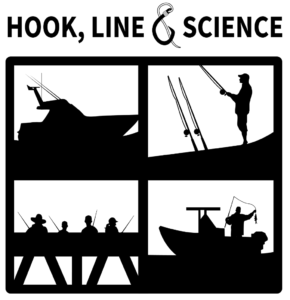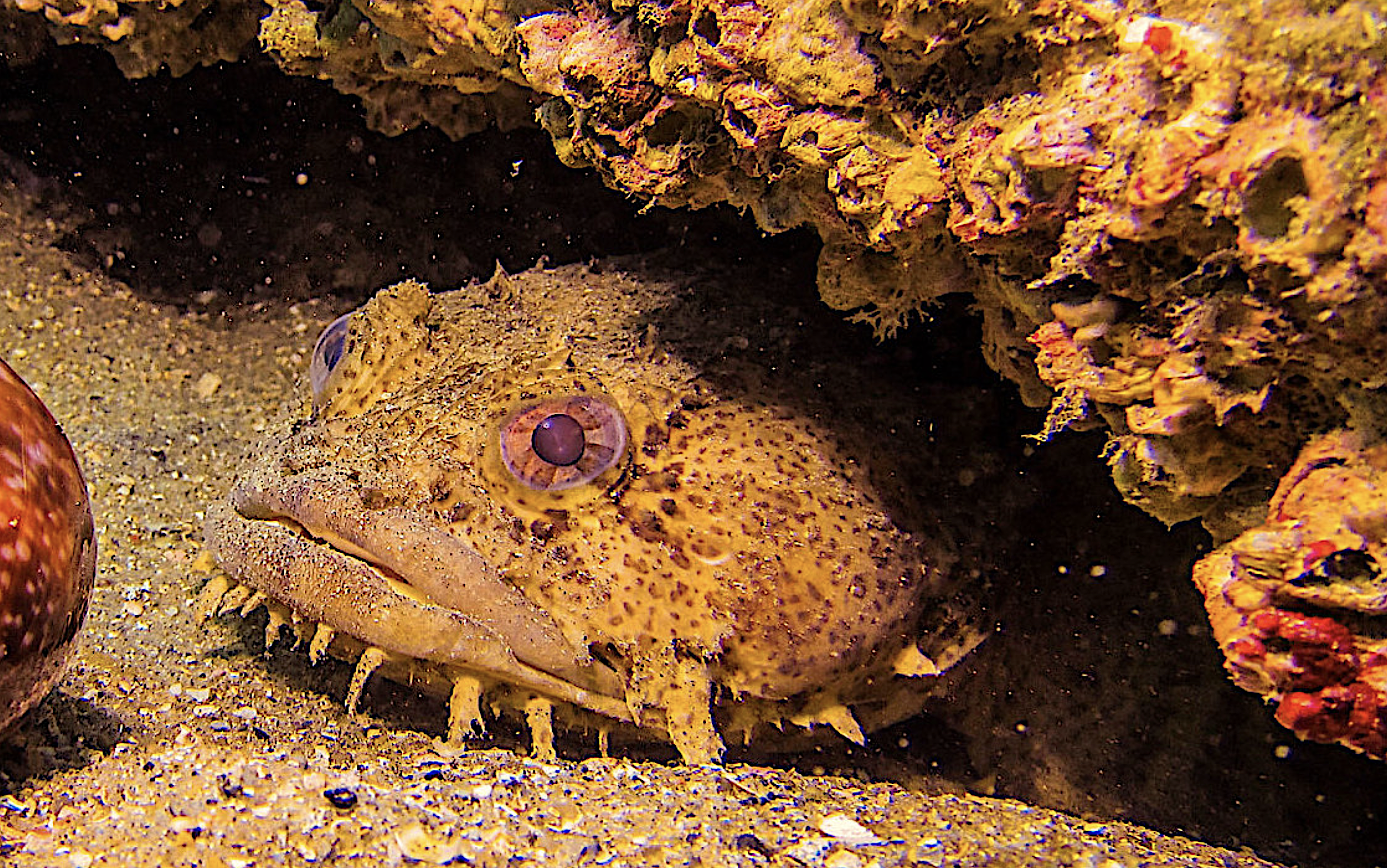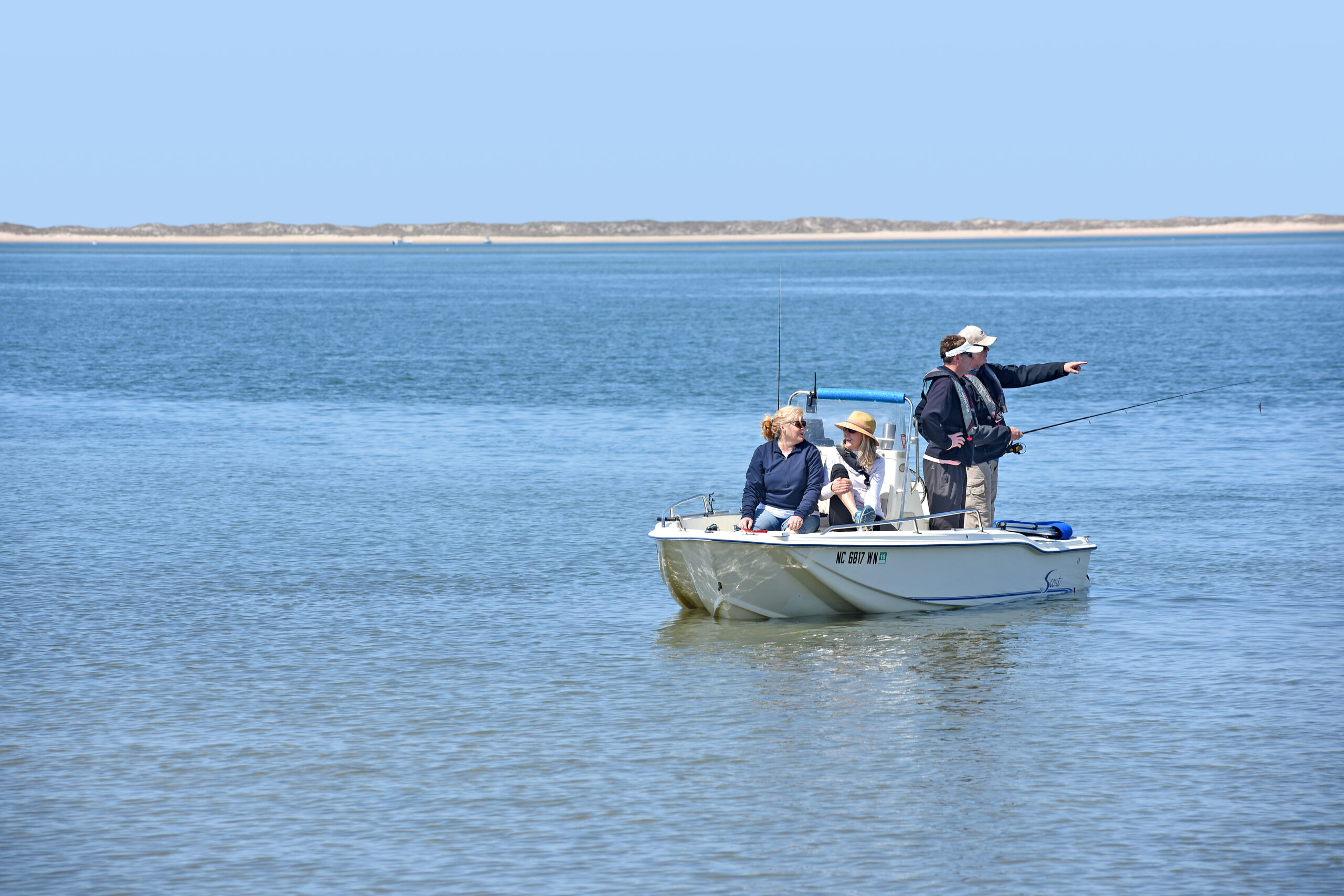Hook, Line & Science
Anglers vs. River Otters, Why We Fish Where We Do, and More
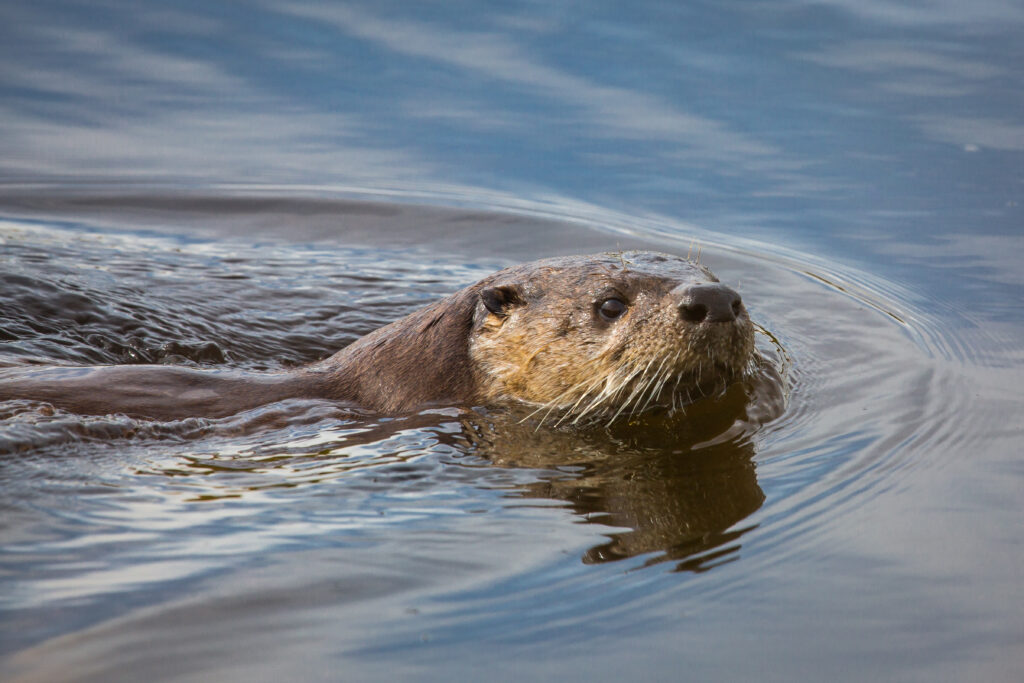
Are anglers competing with river otters for the same fish?
A new study of river otter carcasses from fur traders sheds light on a longstanding question.
North American river otters are common across North Carolina, from the mountains to the sea, and are comfortable in water and on land. Considered a key predator in our aquatic environments, river otters are “optimal foragers” in that they will select large and slow prey if presented the opportunity. In short, they eat to survive.
While they are known to consume reptiles, amphibians, fish, shellfish, and even birds, their preferred prey depends on what is available in their local environment, which makes it difficult to broadly classify what river otters eat.
So, what happens if river otters occupy the same places as anglers? Does that mean that river otters like to eat the same fish that anglers like to catch?
North American mountain trout anglers think they compete with river otters for fish, for instance. However, previous studies have shown that except for specific lake environments outside our state, trout make up a small fraction of the river otter diet.
But a North Carolina angler might ask how do we know what river otters eat in our state?
What did they study?
A team of researchers from NC State University, The Wilds, and the NC Wildlife Resources Commission collected the stomachs from 522 river otter carcasses obtained from licensed trappers and fur dealers from 2009 to 2016. Sample collection occurred only during the trapping season (November through February) across North Carolina — including fourteen river basins with habitat such as bogs, black and brown water systems, freshwater tidal wetlands, pocosins, natural lakes, reservoirs, impoundments, and saltwater estuaries.
The team counted and identified items from river otter stomachs using two different methods: “by hand” (using field guides and a dissecting microscope), and through a newer approach called DNA metabarcoding analysis. The researchers also hoped to learn if one method was superior to the other.
What did they find?
Scientists confirmed that river otters in North Carolina consume a wide variety of prey, mostly vertebrates, with fish the most common item. Perches and sunfish made up 62% of the fish consumed, with carps and minnows present in about 14% of the otters’ stomachs.
Other vertebrates, such as snakes and lizards, were present in 7% of stomachs. Crayfish, crabs, and shrimp were popular invertebrates that otters consumed.
Other prey for otters included suckers, catfishes, largemouth bass, bluegill, and redear sunfish.
The research team identified brook trout by DNA analysis in only two river otter stomachs, both from the North Carolina mountain region.
Anything else?
It turns out that both the manual and DNA methods of prey identification had shortcomings. For example, the manual method was only able to classify fish at the family or order level, in part, because often only hard parts, such vertebrae and scales, remained. The DNA method was able to identify fish species but had difficulty with invertebrate identification.
In addition, the DNA analysis revealed something interesting about male and female otters. Across the state, males otters ate significantly more fish than female otters. Other than fish, male and female river otters in the same locations ate roughly the same prey.
So what?
River otters in the North Carolina mountain region do not seem to rely on freshwater trout. The authors acknowledge that future diet studies should expand sampling to include March through October, as diets may shift seasonally. In addition, advanced DNA analyses, coupled with scat surveys, could paint a broader picture of river otter diet throughout the year.
BY SCOTT BAKER

Where do we like to fish — and why?
Over 1,300 anglers have all the answers.
Recreational anglers always have their “honey holes” — places where conditions are ideal for catching fish — from the leading edge of a hump to a bend in a channel. Limited information exists, however, about how and why anglers use various types of fish habitat.
Resource managers need this type of information to improve restoration and conservation.
What did they study?
Researchers at the College of William & Mary, University of Virginia, and South Carolina Sea Grant Consortium measured the benefits that coastal ecosystems offer anglers. They surveyed 1,323 people about how they make choices to maximize their well-being, as well as what influences those decisions.
The study took place in 2021 at the Middle Peninsula of Virginia (the six counties that lie between York and Rappahannock rivers). Habitat types in the study included: beach or sandy shoreline; human-made bottom structure (e.g., artificial reefs, bridge or pier piles); human-made or artificial shoreline structure (bulkheads, rock or riprap revetments, seawalls); marsh or living shoreline; open water; oyster reef or other natural hard bottom; and seagrass bed.
The research team also conducted several analyses, including an estimation of anglers’ “willingness to pay” for recreational fishing trips to different types of fisheries habitats.
What did they find?
The annual average number of recreational fishing trips that anglers took was about 19, with almost 69% fishing from private motorboats. They most frequently targeted these species, in order: striped bass, croaker, spot, red drum, and spotted seatrout.
Respondents reported fishing in a variety of locations, including waters around the Middle Peninsula (88%), the Chesapeake Bay (54%), rivers and small bays outside of the Middle Peninsula region (37%), and the Atlantic Ocean (15%).
Just over 72% of anglers reported visiting three or fewer habitats during the year. They also ranked the importance of different habitats in supporting healthy recreational fisheries as “extremely important” or “very important” most often for marshes and living shorelines (89%), followed by seagrass beds (86%), oyster reefs or other natural hard bottom (83%), open water (71%), human-made bottom structures (68%), beaches or sandy shorelines (62%), and human-made shoreline structures (48%).
The reasons behind rankings of importance most often included “access to food/forage” (slightly over 90%), “spawning/breeding areas,” and “protection from predators” (each slightly over 80%).
Anything else?
Anglers reported relaxation, time with friends and family, and being outdoors as the primary reasons for fishing recreationally. Individual trip expenditures, one-way travel times, and total trip costs differed across habitats and how anglers chose to fish.
The research team determined that marshes and living shorelines in this region produce $6.42M in annual benefits associated with recreational fishing — over three times greater than the same type of benefits that hardened shorelines provide.
So what?
Coastal marshes and living shorelines generate considerable benefits to recreational anglers due to frequent use, low visitation costs, and anglers’ high willingness-to-pay to access them.
Marsh restoration and living shoreline projects mostly focus on water quality benefits, due to the limited availability of information on other services and benefits that coastal habitats offer. This study demonstrates how more information about the benefits of coastal habitats can aid in management decisions, advancing our understanding of natural coastal assets.
BY SARA MIRABILIO
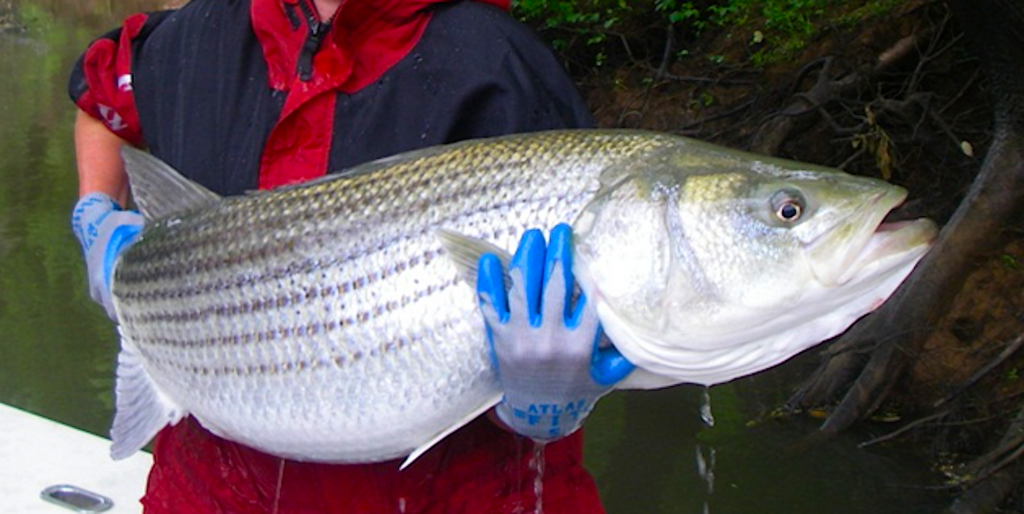
Does it matter how you catch a striped bass?
A new study suggests that how you land a fish could make a real difference when it comes time to release it.
Even though over 90% of recreationally caught striped bass are released each year, due to fisheries regulations and/or angler preferences, many released fish die.
Catch-and-release angling exposes fish to varying degrees of trauma that can cause mortality. To promote best fishing practices, biologists wanted to determine if differences in recreational fishing methods in turn result in different physical injuries, levels of physiological stress, and impaired behaviors of striped bass.
What did they study?
A team of scientists at University of Massachusetts Amherst worked with partner organizations and volunteer small-boat recreational anglers to fish for striped bass in coastal embayments south of Boston, Massachusetts. Anglers captured striped bass using spinning or fly-fishing gear and with a variety of lures and hook types (4 to 3/0 in size, circle and J, as well as single barbless and barbed hook points).
An onboard scientific observer recorded surface water temperature, fight time, and hook removal time, as well as the total duration of handling the fish. The observer also measured each fish’s length and girth, then took blood samples to later determine the effect of stress.
The scientists additionally noted critical injuries and whether there was bleeding at the insertion point for each hook. Prior to release, the team also assessed the behavior of each fish, visually documenting any head, mouth, dorsal fin, gag, and body reflexes.
What did they find?
The anglers captured 95 fish with only one dying immediately after release, hooking 60% percent of the catch with spinning gear lures. Fight times between gear types did not statistically differ.
Slightly less than 12% of the fish experienced critical injuries (cases with severe tissue damage and/or hook placement in vital organs including gills, gullet, and eyes). J hooks were responsible for 9 of 11 of the critical fish injuries (5 by fly and 4 by lure).
Hooking severity was not related to types of terminal tackle (lure or fly). Blood from hooking was present in 22% of all fish.
Of released fish, 33% had no sign of impaired reflexes. The scientists determined that anglers had hooked those striped bass experiencing more severe behavioral impairments with J hooks in critical locations.
From blood chemistry analysis, the researchers did observe a rise in physiological stress indicators with longer fight times. Water temperature also influenced the fish’s physiological responses and mortality rate.
So what?
Overall, the study highlighted that each component of a catch-and-release event impacts each physiological and behavioral response differently.
This study suggests avoiding J hooks to minimize behavior impairments related to critical hooking. The researchers also recommend anglers minimize fight time to improve released striped bass survival.
Injury of fish during angling is likely caused by the way a fish strikes the bait or lure and the way an angler reels the fish in. Given the diversity of angling techniques, locations, and handling, more research will help quantify physical and behavioral impairments of striped bass.
BY SARA MIRABILIO
Read more at HookLineScience.com.
